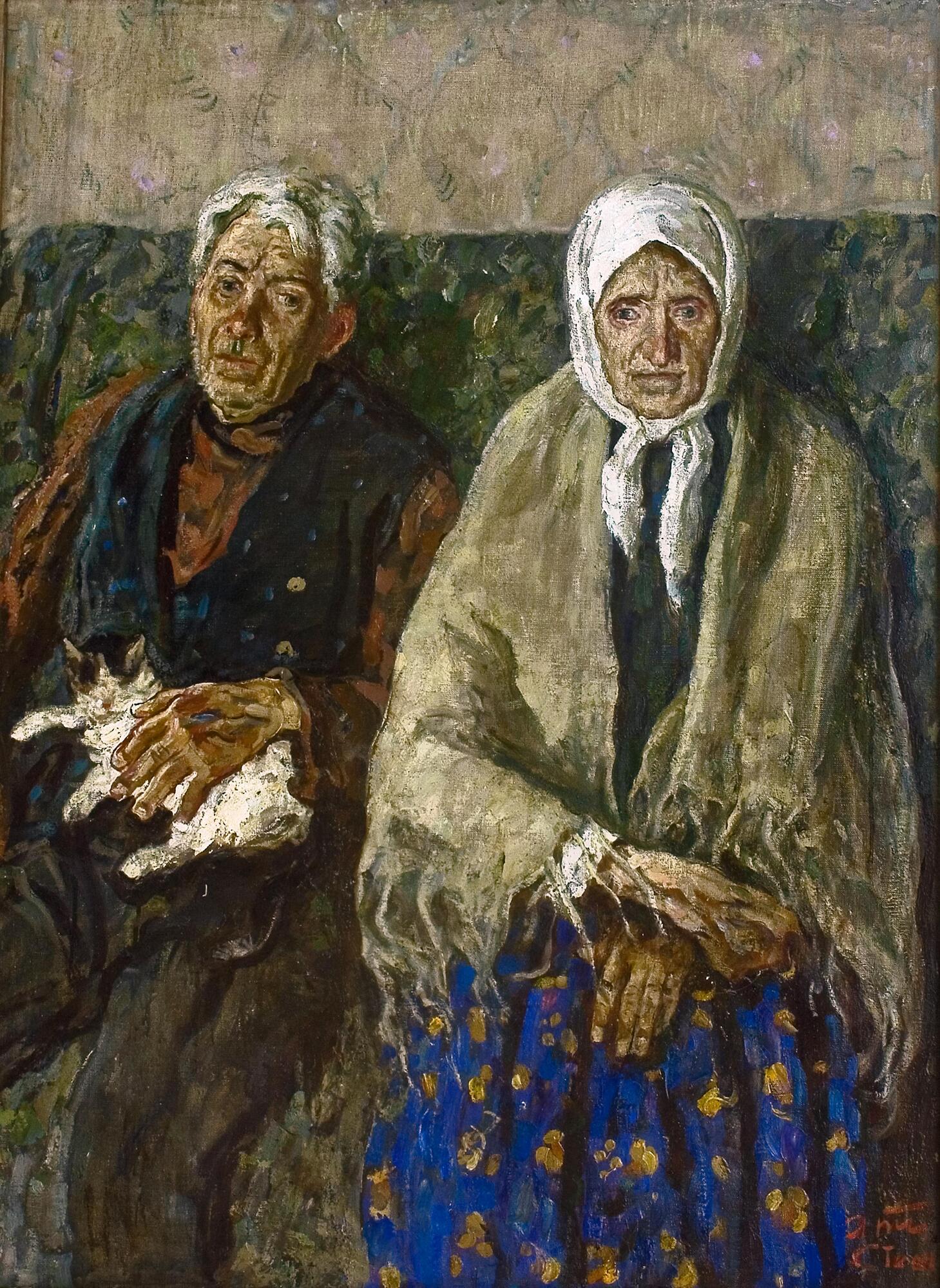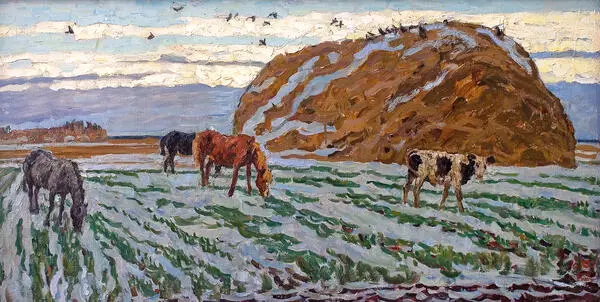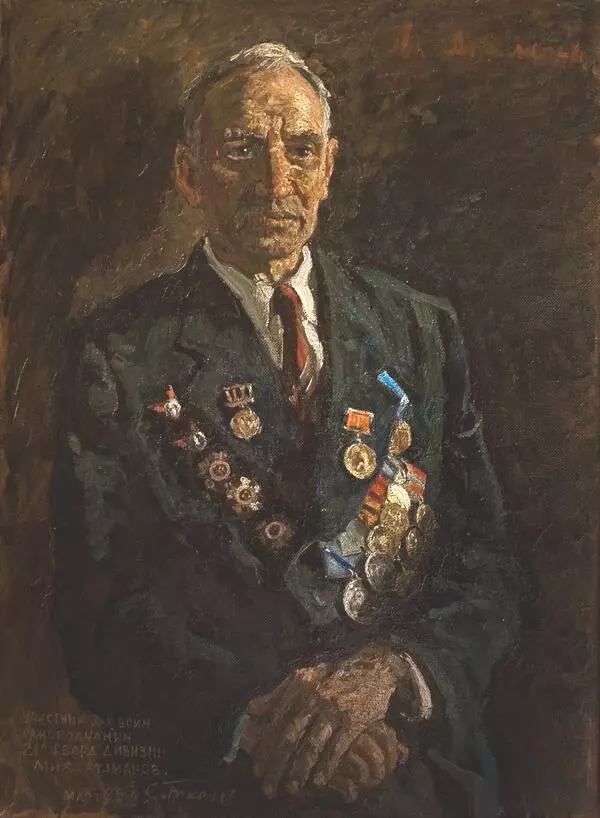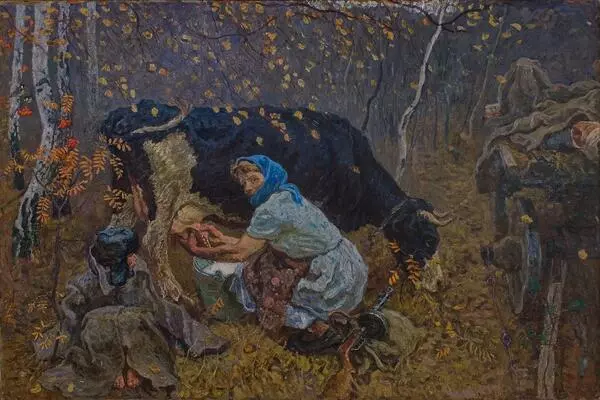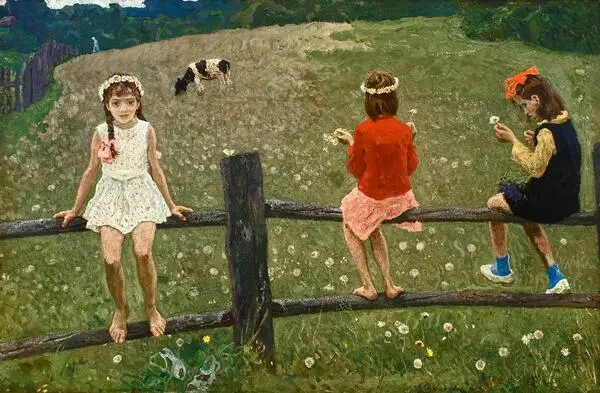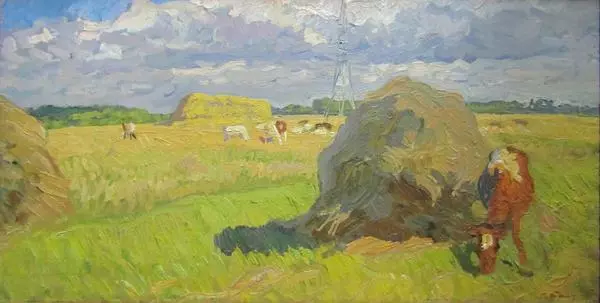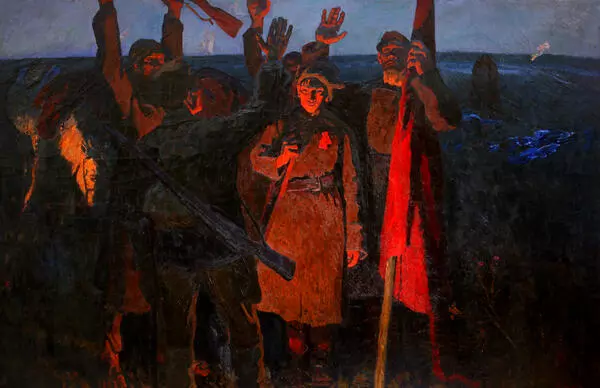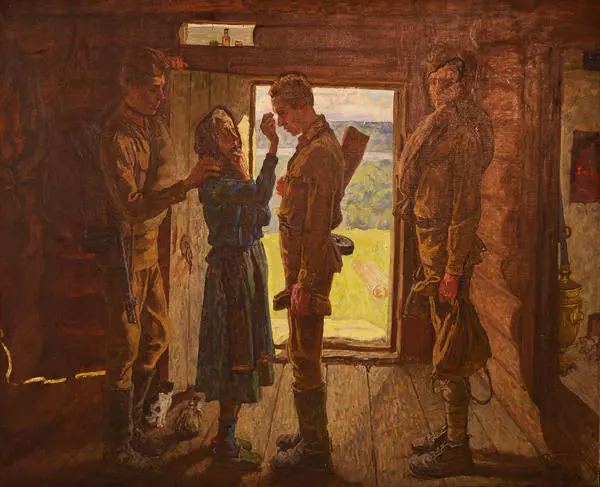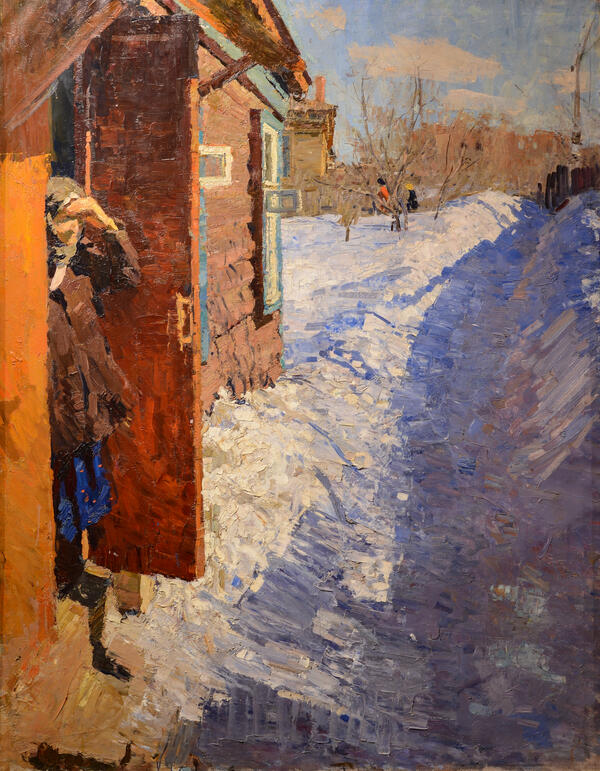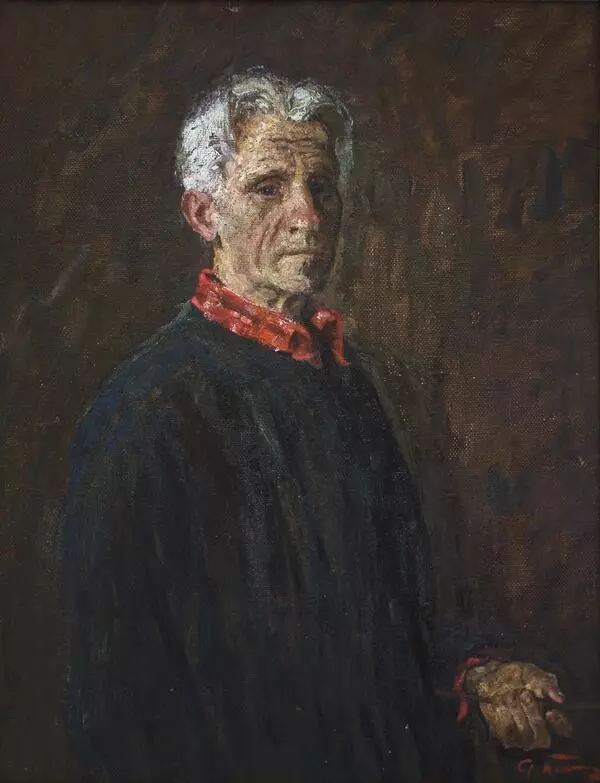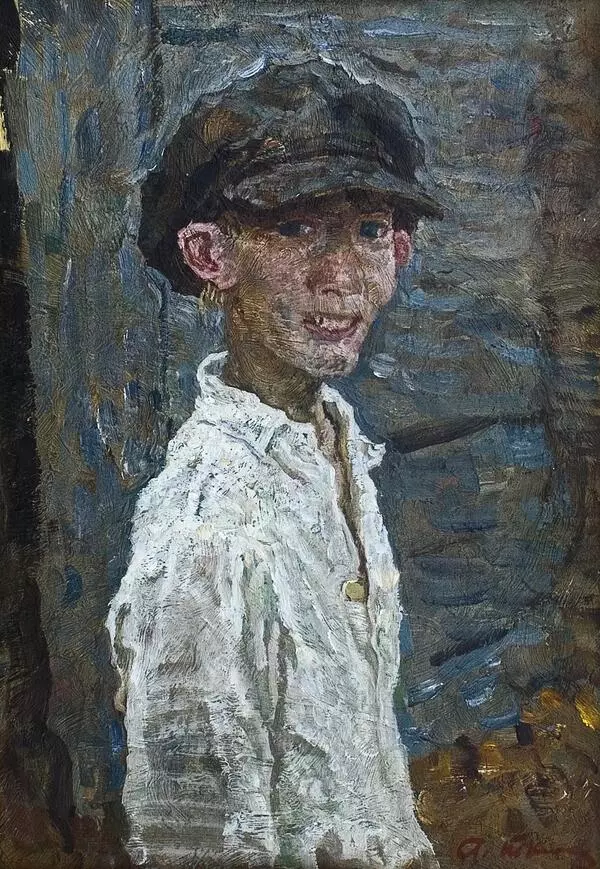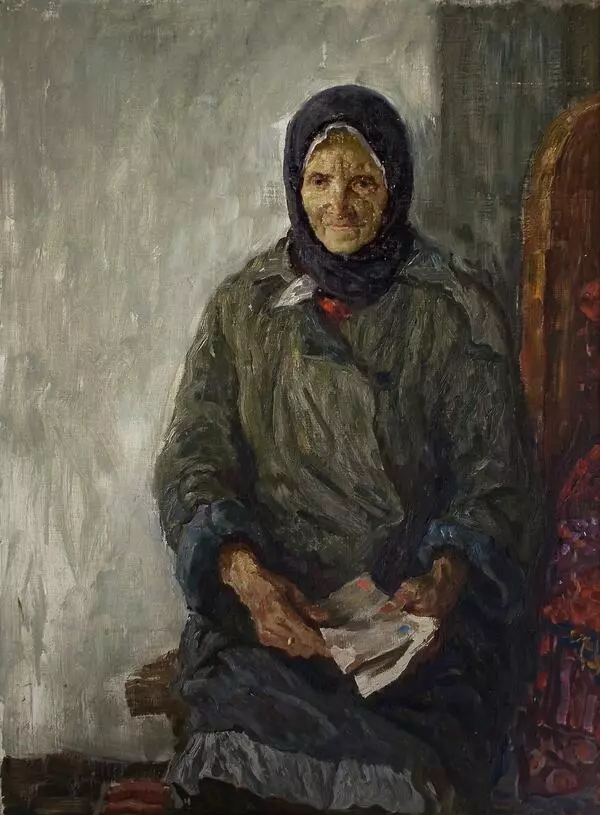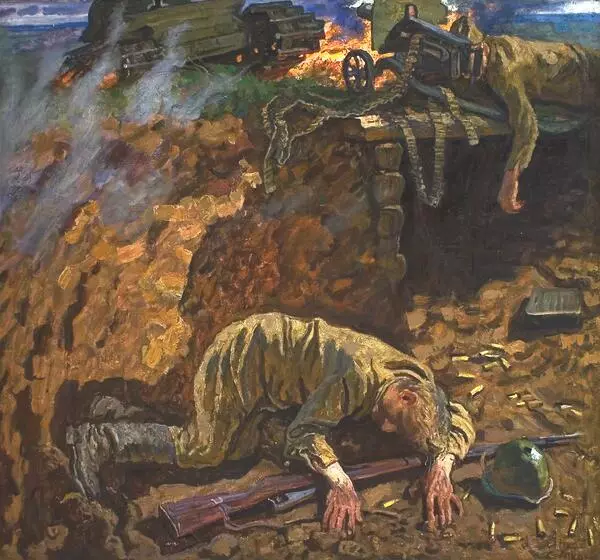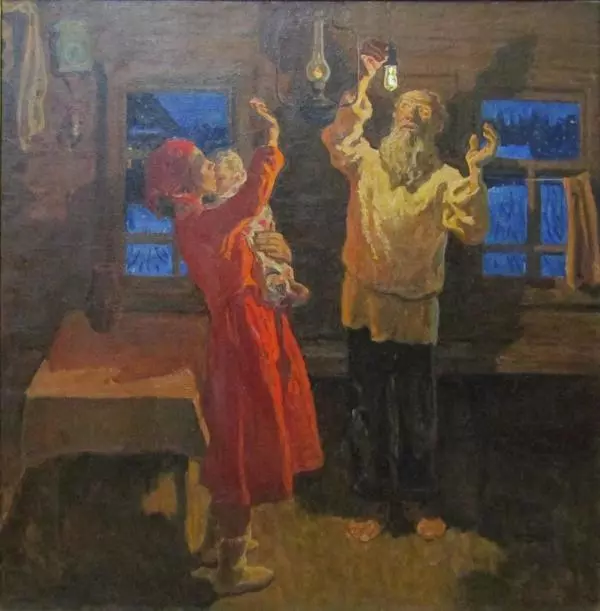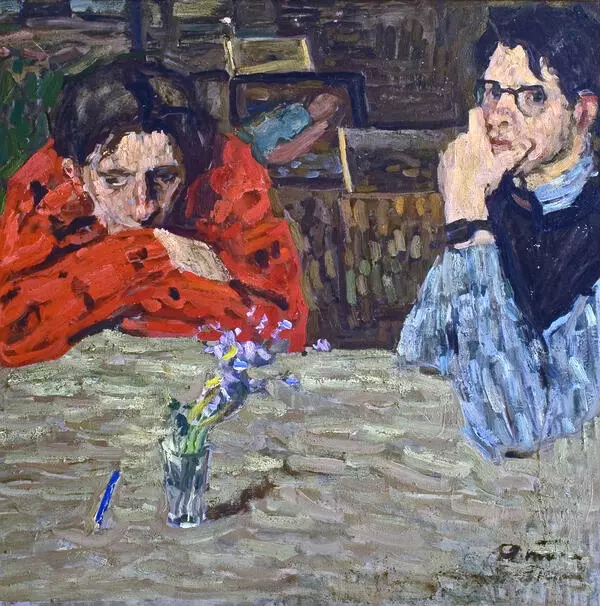Alexei and Sergei Tkachyov completed this dual portrait of their parents in 2000. The brothers often painted their father and mother. They depict them both as young adults, surrounded by their young children, but also in their older age. The artists have always set great store by their family and collected a huge number of stories about them.
The brothers recount that their father, Pyotr Afanasievich, was born in the village of Molotino. Their mother, Maria Vasilievna, was from the neighboring village of Rechitsa. The villages were roughly two kilometers from each other. Both were adjacent to the ancient settlement of Ovstug, the family estate of the poet Fyodor Tyutchev. People from this region observed ancient customs rigorously, including the fact that parents chose their children’s’ future spouses.
Pyotr Afanasievich got married when he was eighteen years old. His family chose his bride from the neighboring village, thinking that the young woman would make a good mother. The bride and groom never even met before the wedding day.
The brothers recount that their father, Pyotr Afanasievich, was born in the village of Molotino. Their mother, Maria Vasilievna, was from the neighboring village of Rechitsa. The villages were roughly two kilometers from each other. Both were adjacent to the ancient settlement of Ovstug, the family estate of the poet Fyodor Tyutchev. People from this region observed ancient customs rigorously, including the fact that parents chose their children’s’ future spouses.
Pyotr Afanasievich got married when he was eighteen years old. His family chose his bride from the neighboring village, thinking that the young woman would make a good mother. The bride and groom never even met before the wedding day.
The artists’ mothers said the following about this: It was truly scary to marry a man who I not only didn’t know, but who I had never even set eyes on. What would he be like? Would he be nice or horrible, clever or stupid, handsome or ugly? Only when the priest asked the question: ‘Mary, servant of God, do you agree to marry Peter, servant of God? ’ I saw my future husband and, swallowing tears, I said: ‘I do’.
Their father felt the same way. He didn’t want to start a family at such a young age: Pyotr had always wanted to leave for the city and get an education. But his parents’ wish was that the young couple should marry. And so, quite by chance, the artists’ parents formed a happy family life, which continued for many years.
The artists never remember their father without a job to do. Before the October revolution, he worked as a lathe operator in a factory in Bezhitsa, and after he led a food detachment in the village. At the same time he led the Ovstug club, where activities were put on. Alexei remembers how his father loved “books madly, he always had books with him.” The artists' mother was illiterate, but when she sewed, she often asked him to read aloud to her. The father read “War and Peace” and “Anna Karenina” to his wife, and later they would discuss the works in a lively manner.
Maria Vasilyevna had a beautiful voice in her youth, and often sung at village weddings. In Rechitsa, she was famous for her sewing and her fine taste. The artists still hold onto her folk costumes, whose fabric she wove herself, before cutting, sewing and decorating with embroidery. Their mother loved to tell her children stories and folk tales. She sang ancient Russian songs to them by the soft light of a fire. The artists admit that it is possible that their mother’s love for folk art led to their love of art.
The artists never remember their father without a job to do. Before the October revolution, he worked as a lathe operator in a factory in Bezhitsa, and after he led a food detachment in the village. At the same time he led the Ovstug club, where activities were put on. Alexei remembers how his father loved “books madly, he always had books with him.” The artists' mother was illiterate, but when she sewed, she often asked him to read aloud to her. The father read “War and Peace” and “Anna Karenina” to his wife, and later they would discuss the works in a lively manner.
Maria Vasilyevna had a beautiful voice in her youth, and often sung at village weddings. In Rechitsa, she was famous for her sewing and her fine taste. The artists still hold onto her folk costumes, whose fabric she wove herself, before cutting, sewing and decorating with embroidery. Their mother loved to tell her children stories and folk tales. She sang ancient Russian songs to them by the soft light of a fire. The artists admit that it is possible that their mother’s love for folk art led to their love of art.
